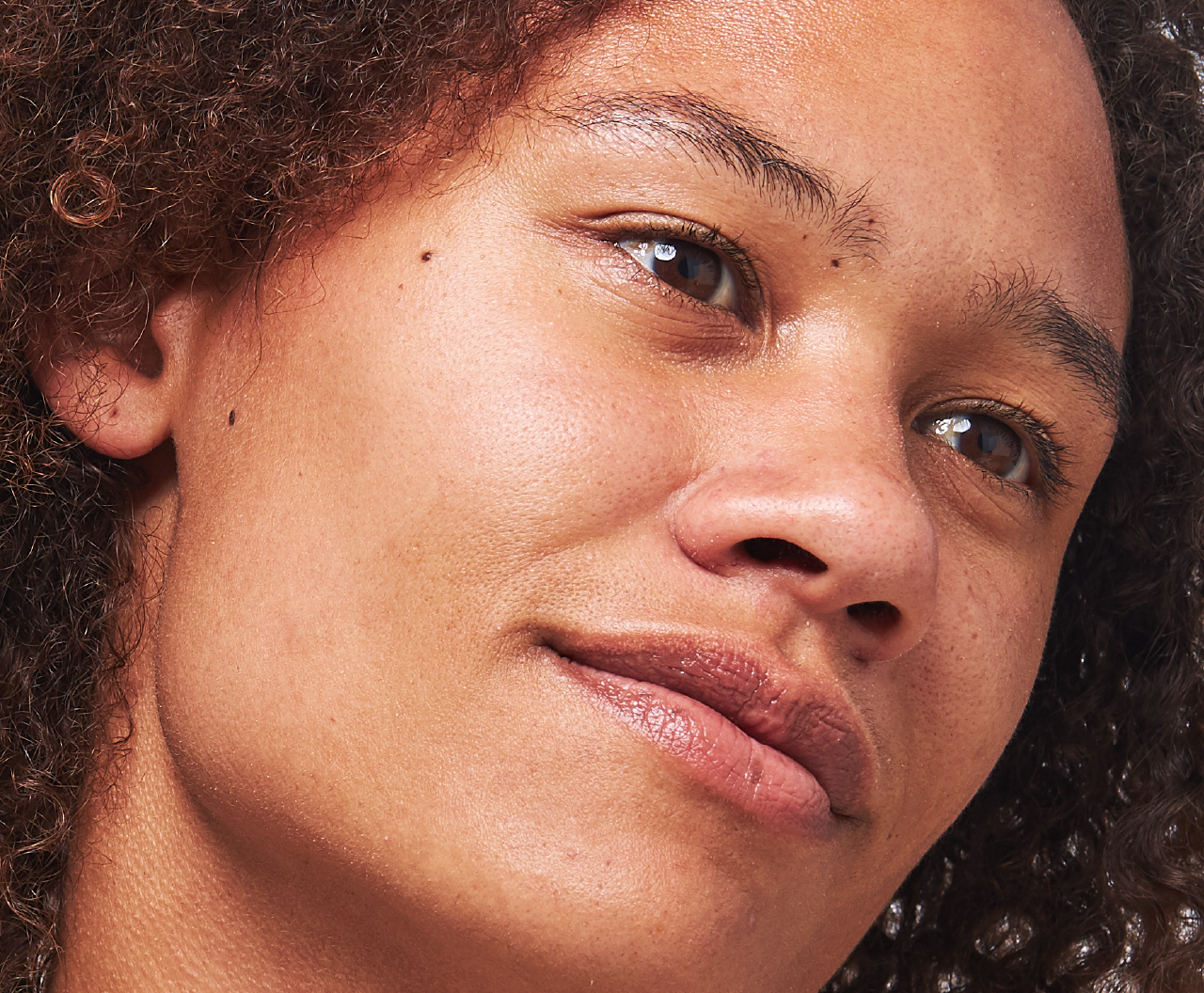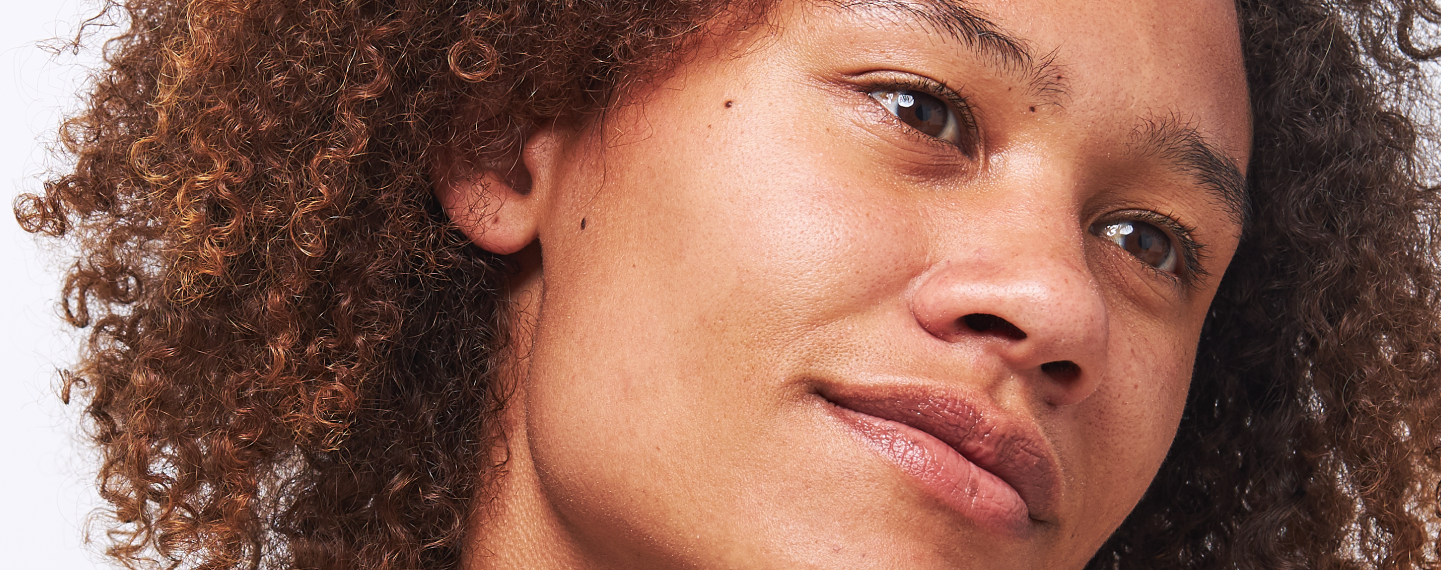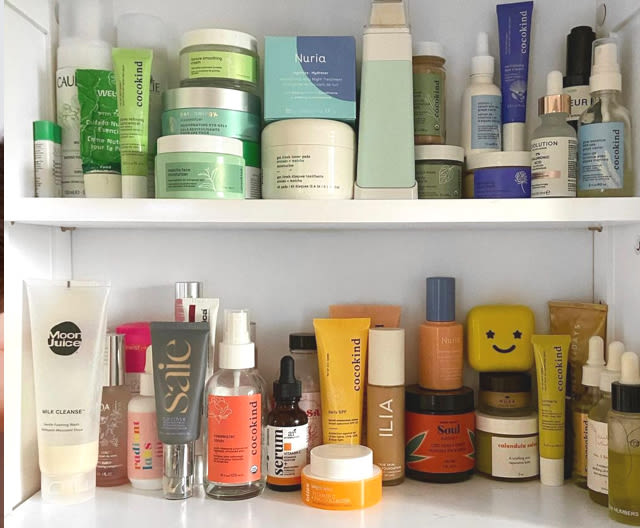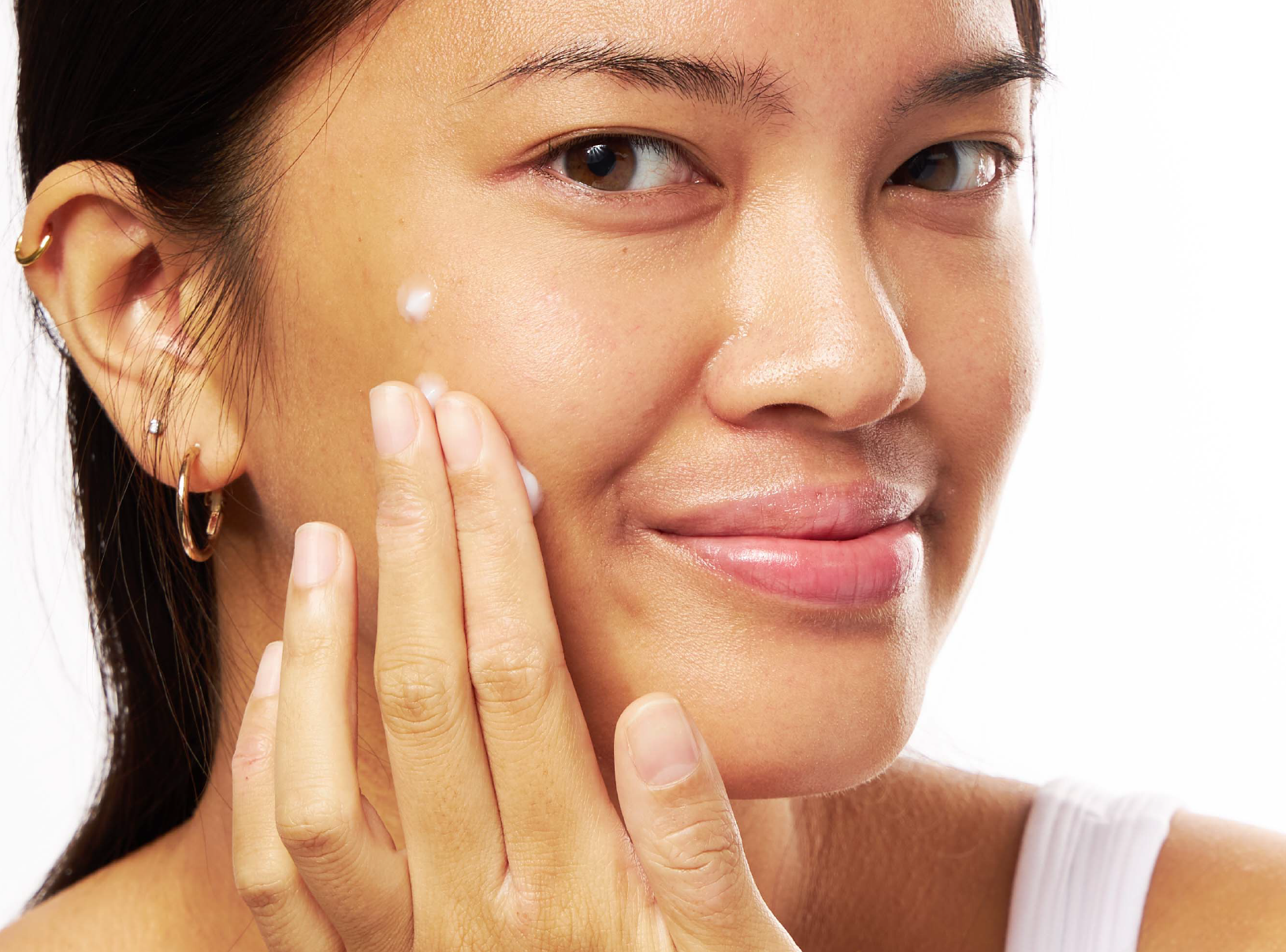Education
How to get rid of whiteheads: 7 methods to try


SHARE
Education
How to get rid of whiteheads: 7 methods to try
Medically reviewed by Mary Lucas, RN
Written by Apostrophe Team
Last updated 4/1/2024
A pimple is a pimple, right? Maybe not. Acne blemishes take many different forms and they are referred to by different names such as “pimple” or “zit” and are of different types including pustule, nodule, cyst, and comedone.
Of course, you can’t forget the whitehead - clogged pores covered in a thin layer of skin. These particular blemishes may not be painful, but they are unpleasant to look at and they tend to pop up at the worst times. The good news is there are simple things you can do to prevent whiteheads from forming and to help existing breakouts heal more quickly.
Below you’ll find an overview of whiteheads to learn more about what they are and where they come from. You’ll also learn why you should avoid the temptation to pop pimples yourself.
Finally, you’ll see our list of 7 proven methods to help get rid of whiteheads.
How Do Whiteheads Form?
Technically called closed comedones, whiteheads are simply plugged hair follicles. Like any acne blemish, they start with a clogged pore. A whitehead is aptly named because it is covered by a thin layer of skin that traps the plug under the skin’s surface. Because the plug isn’t exposed to air, it retains a white or yellowish color.
Like any form of acne, whiteheads are most likely to form in areas of skin where the sebaceous glands are overproducing oil.
This natural oil, called sebum, serves to moisturize and protect the skin. When the skin becomes too oily, however, the excess sebum can accumulate inside your pores to create a plug. The plug combines with dead skin cells and, in some cases, bacteria, which contributes to the development of an acne lesion.
The four factors that directly contribute to acne formation including excess sebum production, clogged pores, bacteria, and inflammation. Certain indirect factors such as hormone fluctuation and chronic stress can affect sebum production while diet, lifestyle, skincare products, and clothing choices can contribute to clogged pores and inflammation.
Why You Shouldn’t Pop That Pimple
When a whitehead erupts on your forehead, it’s tempting to take care of the problem right away. You may think that a quick squeeze is all it takes to pop that pimple so you can go on with your day. The trouble is sometimes this method serves only to make matters worse.
Popping a pimple yourself may force the material in the plug deeper into the follicle under your skin where it could become infected. You also risk increased inflammation, worsened post-inflammatory hyperpigmentation (PIH), and acne scars. Trying to pop other types of acne - such as cysts and nodules - can spread the bacteria deeper under the skin or into the surrounding follicles, causing new blemishes to develop.
If you simply can’t overcome the compulsion to pop a whitehead, there may be a safe way to do it. We’ll cover that in the next section.
7 Proven Methods to Get Rid of Whiteheads
When it comes to acne, prevention is the best medicine. Incorporating acne-fighting ingredients into your daily skincare regimen is key, though it is also important to follow a healthy diet and avoid habits that could exacerbate acne. As careful as you might be, however, your skin has a mind of its own and you may still find yourself dealing with the occasional blemish.
Here are 7 proven methods to help you get rid of whiteheads:
Wash Your Face Twice Daily
No matter your skin type, one of the best things you can do to prevent acne breakouts and keep your skin healthy is to cleanse twice a day. You don’t even need an expensive acne-fighting cleanser.
Washing your face in the morning helps remove excess oil, dead skin cells, and other debris from your face before you moisturize and apply makeup. In the evening, a good cleanse helps remove the day’s accumulation of sweat, sebum, and skin cells along with the makeup and other products you applied that morning.
Use lukewarm water and a gentle cleanser appropriate for your skin type. Avoid scrubbing cleansers that might irritate your skin and pat your skin dry with a clean towel.
Add Toner to Your Skincare Regimen
Toner is a liquid solution you apply to your face after cleansing and before applying facial treatments and moisturizer. These solutions help remove any trace of dirt, oil, makeup, and other impurities that may remain after cleansing.
While toner may be useful it should be used sparingly as it may irritate your skin and worsen your acne. However, research has shown that a toner made from witch hazel may help prevent acne breakouts when used as part of a daily skincare routine. Toner helps tighten pores and, when made with acne-fighting ingredients like salicylic acid, may help prevent whiteheads.
Try Benzoyl Peroxide
Staying consistent with a daily skincare routine is essential, but you may still need to use spot treatments from time to time to deal with whiteheads.
Benzoyl peroxide is an over-the-counter topical treatment that helps reduce inflammation and kill bacteria on the skin and in the follicles. These treatments contain anywhere from 2.5 to 10 percent benzoyl peroxide, so shop carefully to make sure you find the right concentration for your skin.
Use Salicylic Acid
Another option in over-the-counter acne treatments is salicylic acid, a beta hydroxy acid that decreases oil production and exfoliates dead skin cells. It also has anti-inflammatory properties which make it beneficial for more serious cases of acne.
You can find salicylic acid in a wide variety of skincare products ranging from cleansers and toners to gels, creams, facial masks, and moisturizers. Like benzoyl peroxide, concentration varies from one product to another but over-the-counter products typically contain between 0.5 and 5 percent salicylic acid. Lower concentrations are less likely to irritate or dry out your skin.
Exfoliate Several Times a Week
One of the primary contributing factors for whitehead formation is clogged pores. Your skin naturally goes through a regeneration process in which dead skin cells slough off to reveal new skin cells underneath. Exfoliation simply helps move the process along and helps prevent dead cells and excess sebum from collecting in your pores.
When adding an exfoliator to your skincare routine, start with once a week and work your way up to every other day, depending on what kind of product you choose. Use a gentle exfoliant to avoid irritating your skin and making your breakouts worse.
Choose Non-Comedogenic Products
Contrary to popular belief, wearing the wrong makeup (or too much makeup) doesn’t cause acne. Acne is frequently associated with hormonal changes, though that isn’t to say that piling makeup on top of an active breakout won’t make things worse.
Rather than avoiding makeup and skincare products entirely, focus on finding non-comedogenic products. The term non-comedogenic simply refers to products that won’t clog your pores.
It’s particularly important for women with oily skin types to use non-comedogenic products. Examples of non-comedogenic ingredients include salicylic acid, benzoyl peroxide, and sulfur along with certain oils like grapeseed oil, neem oil, and sweet almond oil.
Remember that even when using only non-comedogenic makeup it is important to avoid these two crucial mistakes - don’t share makeup products with other people, and don’t sleep with makeup on. According to the American Academy of Dermatology Association, “Even non-comedogenic makeup can cause acne if you sleep in it.”
See a Dermatologist
If all else fails and you simply can’t get your whiteheads under control, it might be time to visit the dermatologist. Not only can your dermatologist perform extractions as needed, but he or she can make recommendations for stronger acne treatments. Prescription acne treatments often use the same active ingredients as drugstore remedies but in higher concentrations.
In addition to taking these steps to keep your skin clear, it’s important to avoid making existing breakouts worse. Use gentle exfoliating products to remove dead skin and clear the pores - abrasive scrubs may be too harsh for the skin and could exacerbate your breakout.
Avoid popping, picking, or squeezing your whiteheads to avoid increasing the risk of irritation and infection as well.
In Conclusion
If you suffer from adult acne, you’re not alone. Approximately 50 million people in the United States experience acne, including around 12% of adult women.
Acne is a common skin condition that often becomes chronic, but treatment options are available. Acne creams, spot treatments, or prescription medications combined with a daily skincare routine and healthy lifestyle can help reduce or prevent the formation of whiteheads and other acne blemishes.
If you’re curious to learn more about acne treatment, talk to your dermatologist or try an online consultation to develop a personalized treatment plan to fit your needs. You can also find valuable information in our guide to science-backed acne treatments.
Like what you just read? Sign up for our email list to get the scoop on skincare science delivered straight to your inbox.

Education
What is milia?
What is milia? Today, we’re jumping into one type of bump that you may have heard about most commonly in infants — milia.
Read More
Education
Best moisturizer for acne-prone skin
If you have combination acne-prone skin, figuring out which moisturizer is best for your skin might be tough. In this guide, we break down the best moisturizer for combination, acne-prone skin.
Read More
Education
How to build a face care routine
As you get into skincare, it might seem overwhelming, especially trying to figure out the order you're supposed to apply products in. Below, we detail how to build a face care routine for your skin!
Read More
